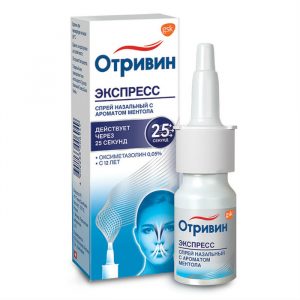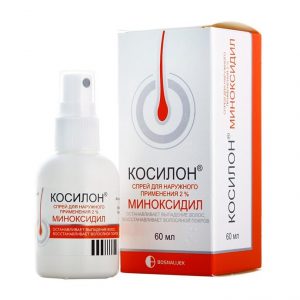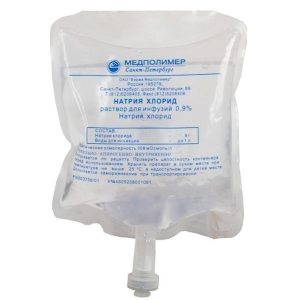Description
Pharmacological action
Paclitaxel-LENS ® (paclitaxel) is a naturally occurring antitumor drug obtained semisynthetically from the Taxus Baccata plant.
The mechanism of action is associated with the ability to stimulate the assembly of microtubules from dimeric tubulin molecules, stabilize their structure and inhibit dynamic reorganization in the interphase, which disrupts the mitotic function of the cell.
Causes dose-dependent suppression of bone marrow hematopoiesis.
According to experimental data, it has mutagenic and embryotoxic properties, causes a decrease in reproductive function.
Indications
– Ovarian cancer (first-line therapy for patients with a common form of the disease or residual tumor (more than 1 cm) after laparotomy (in combination with cisplatin) and second-line therapy for metastases after standard therapy that did not give a positive result).
– Breast cancer (presence of diseased lymph nodes after standard combination therapy (adjuvant treatment) after relapse, within 6 months after the start of adjuvant therapy – first-line therapy for metastatic breast cancer after ineffective standard therapy – second-line therapy).
– Non-small cell lung cancer (first-line therapy for patients who are not planning to undergo surgical treatment and / or radiation therapy (in combination with cisplatin)).
– Kaposi’s Sarcoma in AIDS patients (second-line therapy, after ineffective therapy with liposomal anthracyclines).
Contraindications
– Hypersensitivity to the drug and other drugs, the dosage form of which includes polyoxyethylene castor oil.
– Pregnancy and lactation.
– Initial neutrophil count of less than 1500 / μl in patients with solid tumors.
– The initial (or recorded during treatment) neutrophil content of less than 1000 / μl in patients with Kaposi s sarcoma in AIDS patients.
Precautions: Thrombocytopenia (less than 100,000 / μl), liver failure, acute infectious diseases (including herpes zoster, chickenpox, herpes), severe course of coronary heart disease, myocardial infarction (history), arrhythmias.
Use in pediatrics.
Safety and efficacy of Paclitaxel-LENS ® in children have not been established.
Special instructions
The use of Paclitaxel-LENS ® should be carried out under the supervision of a physician with experience in working with antitumor chemotherapeutic drugs.
To prevent severe hypersensitivity reactions, all patients should be premedicated using glucocorticosteroids, antihistamines and H2 histamine receptor antagonists: 20 mg of dexamethasone (or its equivalent) orally approximately 12 and 6 hours before the administration of Paclitaxel-LENS ®, 50 mg of diphenhydramine (or its equivalent) intravenously and 300 mg of cimetidine or 50 mg of ranitidine intravenously 30-60 minutes before the administration of Paclitaxel-LENS ®.
If severe hypersensitivity reactions develop, the infusion of Paclitaxel-LENS ® should be stopped immediately and symptomatic treatment should be started, and the drug should not be re-administered.
The polyoxyethylene castor oil, which is part of Paclitaxel-LENS ®, can cause the extraction of DEGP [di- (2-hexyl) phthalate] from plasticized polyvinyl chloride containers, and the degree of leaching of DEGP increases with increasing solution concentration and over time. Therefore, when cooking, Storage and administration of the drug Paclitaxel-LENS ® should use equipment that does not contain PVC parts.
During treatment, it is necessary to regularly monitor the picture of peripheral blood, blood pressure, heart rate and the number of breaths (especially during the first hour of infusion), ECG monitoring (and before treatment).
In cases of development of disorders of atrioventricular conduction, with repeated injections, continuous cardiomonitoring is necessary.
If Paclitaxel-LENS ® is used in combination with cisplatin, Paclitaxel-LENS ® should be administered first and then cisplatin.
Patients during treatment with paclitaxel-LENS ® and at least 3 months after the end of therapy should use reliable methods of contraception.
During the treatment period, it is necessary to refrain from engaging in potentially hazardous activities that require an increased concentration of attention and speed of psychomotor reactions.
Paclitaxel-LENS ® is a cytotoxic substance, which must be handled with care, gloves and avoid contact with skin or mucous membranes, which in such cases must be washed thoroughly with soap and water or (eyes) with plenty of water.
Composition
Active ingredient:
Paclitaxel, in terms of 100% substance – 6.0 mg
Excipients:
Polyoxyl 35 castor oil (macrogol glyceryl hydroxystearate) in terms of 100% substance – 527.0 mg,
ethanol (anhydrous ethanol) – up to 1 ml.
Dosage and administration of
To prevent severe hypersensitivity reactions, all patients should be premedicated with glucocorticosteroids, antihistamines and H2 histamine receptor antagonists. For example, 20 mg of dexamethasone (or its equivalent) orally approximately 12 and 6 hours before the administration of Paclitaxel-LENS ®, 50 mg of diphenhydramine (or its equivalent) intravenously and 300 mg of cimetidine or 50 mg of ranitidine intravenously 30-60 minutes before administration Paclitaxel-LENS ®.
When choosing a regimen and doses in each individual case should be guided by the data of special literature.
Paclitaxel-LENS ® is administered intravenously as a 3-hour or 24-hour infusion at a dose of 135-175 mg / m2 with an interval between courses of 3 weeks. The drug is used as monotherapy or in combination with cisplatin (ovarian cancer and non-small cell lung cancer) or doxorubicin (breast cancer).
The recommended dose of Paclitaxel-LENS ® for the treatment of Kaposi s sarcoma in patients with AIDS is 100 mg / m2 as a 3-hour infusion every 2 weeks.
The administration of Paclitaxel-LENS ® should not be repeated until the neutrophil count is at least 1,500 / l of blood and the platelet count is at least 100,000 / l of blood. Patients who, after the administration of Paclitaxel-LENS ®, showed severe neutropenia (neutrophil count <500 / mm3 of blood for 7 days or longer) or severe peripheral neuropathy during subsequent courses of treatment, the dose of Paclitaxel-LENS ® should be reduced by 20% . A solution of the drug is prepared immediately before administration, diluting the concentrate with 0.9% sodium chloride solution, or 5% dextrose solution, or 5% dextrose solution in 0.9% sodium chloride solution for injection, or 5% dextrose solution in Ringer’s solution to the final concentrations from 0.3 to 1.2 mg / ml. The prepared solutions can opalescent due to the carrier base present in the dosage form, and after filtering the opalescence of the solution is retained. When preparing, storing and administering Paclitaxel-LENS ®, equipment that does not contain PVC parts should be used. Paclitaxel-LENS ® should be administered through a system with an integrated membrane filter (pore size not more than 0.22 microns). Side effects The frequency and severity of side effects are dose-dependent. From the hemopoietic organs: neutropenia, thrombocytopenia, anemia. Suppression of bone marrow function, mainly of granulocyte germ, was the main toxic effect limiting the dose of the drug. The maximum decrease in the level of neutrophils is usually observed at 8-11 days, normalization occurs at 22 days. Allergic reactions: in the first hours after the administration of Paclitaxel-LENS ®, hypersensitivity reactions may occur, manifested by bronchospasm, lowering blood pressure, pain in the sternum, flushing of the face, skin rashes, generalized urticaria, and angioedema. Isolated cases of chills and back pain are described. From the cardiovascular system: lowering blood pressure, less often – increasing blood pressure, bradycardia, possible tachycardia, atrioventricular block, ECG changes, vascular thrombosis and thrombophlebitis. From the respiratory system: interstitial pneumonia, pulmonary fibrosis, pulmonary embolism, as well as a more frequent development of radiation pneumonitis in patients simultaneously undergoing radiation therapy. From the nervous system: mainly paresthesia. Rarely, convulsive seizures such as grand mal, visual impairment, ataxia, encephalopathy, autonomic neuropathy, manifested by paralytic ileus and orthostatic hypotension. From the musculoskeletal system: arthralgia, myalgia. From the digestive system: nausea, vomiting, diarrhea, mucositis, anorexia, constipation. Single reports of acute intestinal obstruction, intestinal perforation, mesenteric artery thrombosis, ischemic colitis. From the side of liver function: increased activity of hepatic transaminases (usually ACT), alkaline phosphatase and bilirubin in blood serum. Cases of hepatonecrosis and hepatic encephalopathy are described. Local reactions: pain, swelling, erythema, induction and pigmentation of the skin at the injection site, extravasation can cause inflammation and necrosis of the subcutaneous tissue. On the part of the skin and skin appendages: alopecia, rarely pigmentation disorder or discoloration of the nail bed. Other adverse reactions: asthenia and general malaise. Overdose of Symptoms: bone marrow aplasia, peripheral neuropathy, mucositis. Treatment: symptomatic. The antidote to paclitaxel is not known. Storage conditions In the dark place at a temperature of no higher than 25 ° C. Keep out of the reach of children. Expiration 2 years. Do not use after the expiration date printed on the package. dosage form infusion solution




